|
|
Post by Bonobo on Oct 28, 2010 22:47:28 GMT 1
Poland is to build a Righteous Among Nations museum dedicated to the thousands of Poles who are commemorated at Yad Vashim in Jerusalem, who saved Jews during WW II Nazi occupation.
The museum is to be built in the village of Markowa, near Rzeszow, southern Poland, where the Ulma family was slaughtered by the Nazis after hiding eight people from two Jewish families. The Nazis raided their house in March 1944 and the Jews were immediately shot: the same fate was later met by the pregnant Wiktoria Ulma and her husband.
Seven members of the Weltz family were also hidden in the barn of Dorota and Antoni Szylar in the same village.
Visitors to the museum will be able to watch multimedia shows and video accounts of the gruesome events during WW II and walk the reconstructed street of a pre-war Jewish town.
“It’s a wonderful idea,” Miriam Akawia, an Israeli novelist who survived Holocaust told the Rzeczpospolita daily.
“Poland should be proud of the Polish Righteous, who were real heroes. During the war Poland was the only country where hiding Jews meant a death sentence. Nevertheless it is the Polish who constitute the biggest group among the Righteous. Over 6,000 Poles put their lives at risk to save Jews. Unfortunately, not many people are aware of that,” she added. 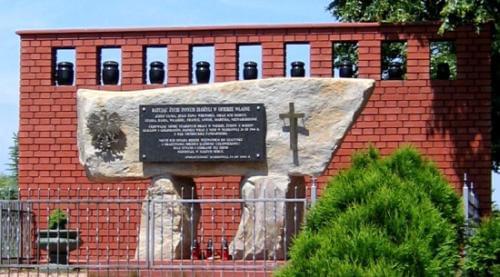 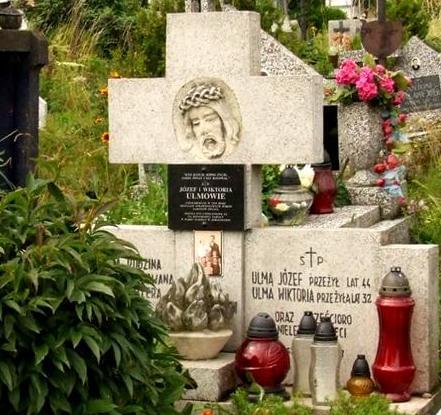
|
|
|
|
Post by Bonobo on May 1, 2011 7:48:51 GMT 1
Everybody heard about Irena Sendler, but actually there were thousands of Poles who helped Jews in those terrible times, though in Poland occupied by Nazis it was punished with death. Henryk S³awik (1894-1944) was a Polish politician, diplomat, and social worker who during World War II helped save 5,000 Hungarian and Polish Jews from Budapest by giving them false Polish passports.
Henryk S³awik was born in 1894 in the village of Szeroka, now a part of Jastrzêbie Zdrój, Poland (then German Empire). The 5th son in a poor peasant family, he was sent by his mother to an academic secondary school. After graduation, S³awik volunteered for the Polish Army. After his term ended he joined the police force and served as a police officer in Silesia until 1939. At the same time S³awik was an activist of the right-wing faction of the Polish Socialist Party.
At the outbreak of the German invasion of Poland in 1939 S³awik joined the Polish mobilised police battalion attached to the Kraków Army. He fought with distinction during the retreat along the northern Carpathians. His battalion was attached to the 2nd Mountain Brigade, with which he defended mountain passes leading to Slovakia.
On September 15 S³awik and his men were ordered to retreat towards the newly established border with Hungary. On September 17, after the Soviet Union joined the war against Poland, S³awik crossed the border and was interned as a prisoner of war. József Antall (Senior), a member of the ministry of internal affairs responsible for the civilian refugees and the father of the future prime minister József Antall (Junior), spotted S³awik in one of the camps. Thanks to his fluent knowledge of German, S³awik was brought to Budapest and allowed to create the Citizen's Committee for Help for Polish Refugees (Komitet Obywatelski ds. Opieki nad Polskimi Uchod¼cami). Together with József Antall he organised jobs for the POWs and displaced persons, schools and orphanages. He also clandestinely organised an organisation whose purpose was to help the exiled Poles leave the camps of internment and travel to France or the Middle East to join the Polish Army. S³awik also became a delegate of the Polish Government in Exile.
The Polish Wallenberg
After the Hungarian government issued racial decrees and separated Polish refugees of Jewish descent from their colleagues, S³awik started to issue false documents confirming their Polish roots and Roman Catholic faith. He also helped several hundred Polish Jews to reach Yugoslav partisans. One of his initiatives was the creation of an orphanage for Jewish children (officially named School for Children of Polish Officers) in Vác. To help disguise the true nature of the orphanage, the children were visited by Catholic Church authorities, most notably by nuncio Angelo Rotta.
After the Nazis took over Hungary in March 1944, S³awik went underground and ordered as many of the refugees as were under his command to leave Hungary. Because he had appointed a new commanding officer of the camp for Polish Jews, all of them were able to escape and leave Hungary. The Jewish children of the orphanage in Vác were also evacuated. S³awik was arrested by the Germans on March 19, 1944. Although brutally tortured, he did not inform on his Hungarian colleagues. During the investigation he acted in a heroic way, taking all the responsibility for saving Jews upon himself and did not admit he knew Antall. He was sent to the Mauthausen concentration camp where he was shot to death, probably in August 1944. His wife survived the Ravensbrück concentration camp and after the war found their daughter hidden in Hungary by the Antall family. S³awik's place of burial remains unknown.
It is estimated that Henryk S³awik helped as many as 30,000 Polish refugees in Hungary, approximately 5,000 of them Jews. After 1948, the communist authorities of both Poland and Hungary did commemorate his deeds and pointed out his importance for humanity. In 1992, thanks to the efforts of Zvi Henryk Zimmerman, the Yad Vashem Commemorative Authority honoured S³awik with the title of Righteous Among the Nations.More in Polish here: blogbiszopa.blog.onet.pl/Zapomniany-wybawiciel,2,ID426216260,n   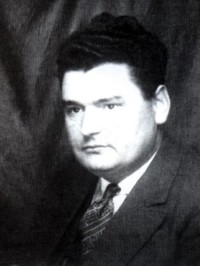 The site with Polish Righteous www.sprawiedliwi.org.pl/en/cms/news-archive/431,jastrzebie-zdroj-a-tribute-to-henryk-slawik/ |
|
|
|
Post by Bonobo on May 1, 2011 9:37:16 GMT 1
S³awik rescued Polish Jews in Germany`s ally, Hungary, while Irena Sendler in occupied Poland. 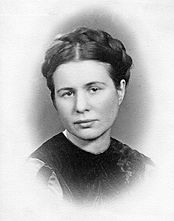 Irena Sendler (née Krzy¿anowska, commonly referred to as Irena Sendlerowa in Poland; 15 February 1910 – 12 May 2008)[1] was a Polish Catholic social worker who served in the Polish Underground and the ¯egota resistance organization in German-occupied Warsaw during World War II. Assisted by some two dozen other ¯egota members, Sendler saved 2,500 Jewish children by smuggling them out of the Warsaw Ghetto, providing them with false documents, and sheltering them in individual and group children's homes outside the Ghetto.[2] Irena Sendler (née Krzy¿anowska, commonly referred to as Irena Sendlerowa in Poland; 15 February 1910 – 12 May 2008)[1] was a Polish Catholic social worker who served in the Polish Underground and the ¯egota resistance organization in German-occupied Warsaw during World War II. Assisted by some two dozen other ¯egota members, Sendler saved 2,500 Jewish children by smuggling them out of the Warsaw Ghetto, providing them with false documents, and sheltering them in individual and group children's homes outside the Ghetto.[2]
Early life
Sendler was born as Irena Krzyzanowski on 15 February 1910 in Warsaw. Her father, Stanislaw Krzyzanowski, was a physician. Sendler sympathised with Jews from childhood. Her father died in February 1917 of typhus contracted while treating patients his colleagues refused to treat. Many of those patients were Jews. After his death, Jewish community leaders offered to pay for Sendler's education. She opposed the ghetto-bench system that existed at some prewar Polish universities and as a result was suspended from Warsaw University for three years.[3]
[edit] World War II
During the German occupation of Poland, Sendler lived in Warsaw (prior to that, she had lived in Otwock and Tarczyn while working for urban Social Welfare departments). As early as 1939, when the Germans invaded Poland, she began aiding Jews. She and her helpers created over 3,000 false documents to help Jewish families, prior to joining the organized ¯egota resistance and the children's division. Helping Jews was very risky—in German-occupied Poland, all household members risked death if they were found to be hiding Jews, a more severe punishment than in other occupied European countries.

Nazi German poster in German and Polish (Warsaw, 1942) threatening death to any Pole who aided Jews
In December 1942, the newly created ¯egota (the Council to Aid Jews) nominated her (by her cover name Jolanta[4]) to head its children's section. As an employee of the Social Welfare Department, she had a special permit to enter the Warsaw Ghetto to check for signs of typhus, something the Nazis feared would spread beyond the Ghetto.[5] During these visits, she wore a Star of David as a sign of solidarity with the Jewish people and so as not to call attention to herself.
She cooperated with the Children's Section of the Municipal Administration, linked with the RGO (Central Welfare Council), a Polish relief organization that was tolerated under German supervision. She organized the smuggling of Jewish children out of the Ghetto, carrying them out in boxes, suitcases and trolleys.[2] Under the pretext of conducting inspections of sanitary conditions during a typhoid outbreak, Sendler visited the Ghetto and smuggled out babies and small children in ambulances and trams, sometimes disguising them as packages.[6] She also used the old courthouse at the edge of the Warsaw Ghetto (still standing) as one of the main routes for smuggling out children.
The children were placed with Polish families, the Warsaw orphanage of the Sisters of the Family of Mary, or Roman Catholic convents such as the Little Sister Servants of the Blessed Virgin Mary Conceived Immaculate[7] at Turkowice and Chotomów. Sendler cooperated very closely with social worker and catholic nun, mother provincial of Franciscan Sisters of the Family of Mary - Matylda Getter. She rescued between 250-550 Jewish children in different education and care facilities for children in Anin, Bia³o³êka, Chotomów, Miêdzylesie, P³udy, Sejny, Vilnius and others.[8] Some children were smuggled to priests in parish rectories. She buried lists of their real names in jars in order to keep track of their original and new identities. ¯egota assured the children that, when the war was over, they would be returned to Jewish relatives.[9]
In 1943, Sendler was arrested by the Gestapo, severely tortured, and sentenced to death. ¯egota saved her by bribing German guards on the way to her execution. She was left in the woods, unconscious and with broken arms and legs.[2] She was listed on public bulletin boards as among those executed. For the remainder of the war, she lived in hiding, but continued her work for the Jewish children. After the war, she dug up jars containing the 2,500 children's identities and attempted to find the children and return them to their parents.[10] However, almost all of their parents had been killed at the Treblinka extermination camp or had otherwise gone missing.
More about awards etc: en.wikipedia.org/wiki/Irena_Sendler |
|
|
|
Post by Bonobo on May 12, 2011 19:16:35 GMT 1
I just heard or read this: Poles claim that it required about 10 people to effectively hide and rescue one Jew. This argument is used to point to enormous difficulties that had to be overcome in order to save Jews. But, alas, who really created those difficulties? Germans? Not really. It was other Poles or renegade Jews who were ready to inform Gestapo about hiding Jews or, on most occasions, to use the knowledge to extort money from them. That is why the hiding sites had to be changed so often because if the Jews stayed in one place for too long, it was sure to be given away sooner or later. That makes the Jew rescuers even more heroic and it doesn`t matter if they did it for money or pure human pity. Many stories of the rescue contain this give-away element:
Franciszka Abramowicz
born 1899 – died 1990
Recognized as the Righteous Among the Nations:
14 January 1987
Franciszka Abramowicz
Help Was Extended to:
Sender Dyszel
Story of Rescue
October 2009, Virtual Shtetl Project
Franciszka Abramowicz, during World War II, she hid a Jew, Sender Dyszel, in her home in Miêdzyrzec Podlaski.
At the time of danger he was hiding in the cellar. When the neighbours denounced on him to the occupation authorities, he had to hide in the nearby forest for some time, where Franciszka brought him food. When the matter trailed off, he returned to her home.
In 1947, Sender Dyszel left Poland and settled in Argentina.
If you want to read all hundreds of stories before I publish sojme of them ,you can find them here in ABC order: www.sprawiedliwi.org.pl/en/helpstory/ |
|
|
|
Post by valpomike on May 12, 2011 20:34:48 GMT 1
Some people, I guess, in the old Poland, will do anything for money, to feed there families.
Mike
|
|
|
|
Post by pjotr on May 12, 2011 22:54:24 GMT 1
Some people, I guess, in the old Poland, will do anything for money, to feed there families. Mike Not only in Poland Mike, in the Netherlands of the Second world war too. Like you said earlier in some post somewhere else. The main reason for betrayal and collaboration was money. The first reason, some others were real idiots, they believed in Nazism, or were pathological anti-semites! |
|
|
|
Post by Bonobo on Jul 8, 2011 19:11:01 GMT 1
Poles honoured for saving Jews
07.07.2011 12:29
Israel’s ambassador in Poland, Mr Zvi Rav-Ner bestowed honorary citizenship on two Poles yesterday for their families’ roles in saving Jews during World War II.
“Those who saved a single Jew saved an entire family, and an entire nation,” the Israeli ambassador said.
“Those who saved us are very modest people; they do not regard themselves as heroes. They did what – as they put it – they had to do,” Ambassador Rav-Ner added.
Wladyslaw Porebski was twelve years old when in 1943, his parents took in Jewish refugees at their property in the Beskid Mountains.
A specially-built shelter was created at the barn that adjoined the family house in the village of Bujakow. Amongst those aided were Adela Grunfeld and her son Leon, who had fled from the Nazi-run ghetto in the city of Sosnowiec in southern Poland.
Likewise, in July 1942, two Jewish sisters, Regina and Helena Schreiber, fled the ghetto in the south-eastern Polish city of Stalowa Wola. They pinned their hopes on an old school colleague, Marta Miazgowicz.
Regardless of the risks involved – potentially death sentences for the entire family – the Miazgowicz family provided shelter to the Schreibers for several months, eventually organising false papers that allowed the sisters to work in Germany as Polish labourers, thus surviving the war.
Krystyna Miazgowicz-Slezinska, daughter of Marta, received the honorary citizenship yesterday. Their father, who celebrated his 100th birthday this month, was not well enough to take part in the ceremony.
Wladyslaw Porebski was able to receive his honorary citizenship in person.
Both families have already been awarded with the medals of the Righteous Among Nations by Israel’s Yad Vashem Institute.
|
|
|
|
Post by crazyhorse1 on Aug 23, 2012 2:48:53 GMT 1
A war will bring out the very worst in people as well as the very best.
|
|
|
|
Post by Bonobo on Mar 26, 2017 15:29:10 GMT 1
Polish family who sheltered Jews in WWII commemorated in parliament 23.03.2017 12:29 An exhibition dedicated to the Polish Ulma family, who were killed for sheltering Jews during WWII, has been opened in the Polish parliament.  Wiktoria and Józef Ulma. Photo: muzeummarkowa.podkarpackie.pl.Wiktoria and Józef Ulma. Photo: muzeummarkowa.podkarpackie.pl. The exhibition, titled “The Samaritans of Markowa”, referring to the Ulma family’s home village in southeastern Poland, features photos and documents which show the family as well as the life of the Polish and Jewish communities in the area. On 24 March 1944, German policemen shot eight Jews who were being sheltered by Józef and Wiktoria Ulma. Józef Ulma, his pregnant wife, and their six children were also killed. In 1995, Israel's Yad Vashem institute posthumously named the Ulma family Righteous Among the Nations. In 2003, the Roman Catholic Church in Poland initiated a process for the family to be beatified. A museum named after the family, dedicated to Poles who aided Jews during World War II, was opened in Markowa last year. Over 6,600 ethnic Poles are commemorated in Israel's Garden of the Righteous in Jerusalem for aiding Jews during World War II. The exhibition in the Polish parliament will remain open until March 27. |
|
|
|
Post by propatriapoland on Jan 27, 2019 22:23:20 GMT 1
The video tells the story of the Ulma Family from Markowa whose all members were executed by Germans during WWII in occupied Poland for saving Jews.
|
|
|
|
Post by Bonobo on Jan 27, 2019 22:54:26 GMT 1
The video tells the story of the Ulma Family from Markowa whose all members were executed by Germans during WWII in occupied Poland for saving Jews. Yes, Ulma family are the best known example of Poles who lost their lives for helping their Jewish neighbours. However, there were hundreds of other Poles who also died for such help but whose names are less known to the public. One day I am going to make a big photo story from my visit to Schindler`s Museum in Krakow. For now, only two photos of German lists of executed Poles - some died for helping Jews. They were average Poles whose names are recorded somewhere in deep archives, not popularised by the media. Witold Sygiericz, Kazimierz Rachtan, died for hiding Jews. That was only Krakow district and only 1943.    |
|
|
|
Post by propatriapoland on Jan 28, 2019 15:36:43 GMT 1
Museum of Poles Saving Jews during World War II The Ulma family in Markowa near Łańcut commemorates Poles who saved Jews condemned to extermination.
|
|
|
|
Post by Bonobo on Jan 28, 2019 20:41:41 GMT 1
Museum of Poles Saving Jews during World War II The Ulma family in Markowa near Łańcut commemorates Poles who saved Jews condemned to extermination. The first post in this thread was written in 2010 and it tells about the plans to build a museum. Now I can see it`s been finished. Good. PS. I also changed the title of this thread by adding "was punished with death" Let it be the thread only about Poles (or Jews who also tried to save their compatriots) who died saving Jews during the occupation. |
|
|
|
Post by propatriapoland on Feb 15, 2019 21:27:27 GMT 1
Rescue of Jews by Poles during the Holocaust
|
|
|
|
Post by Bonobo on Apr 19, 2019 15:35:35 GMT 1
www.thefirstnews.com/article/diplomat-who-used-fake-passports-to-save-hundreds-of-jews-during-wwii-named-righteous-among-the-nations-5639 Diplomat who used fake passports to save hundreds of Jews during WWII named Righteous Among the Nations
History
Joanna Jasińska April 18, 2019
The illegal passports were paid for by Jewish groups, while the Polish diplomats acted as the middlemen, giving bribes or producing the fake passports. Twitter/@plinswitzerland/Polski Przegląd Dyplomatyczny
A Polish diplomat who saved the lives of hundreds of Jews during WWII by giving them false passports is to be named a Righteous Among the Nations, according to reports.
According to daily newspaper Haaretz, the Yad Vashem Institute in Jerusalem has said WWII consul Konstanty Rokicki will be honoured for issuing the fake Latin American passports which helped hundreds of Jews escape the Holocaust in Nazi occupied Poland.
Konstanty Rokicki was a consul in Bern, Switzerland, where together with other Polish diplomats led by the ambassador, Aleksander Ładoś, his deputy Stefan Ryniewicz and diplomat Juliusz Kuehl, they produced fake documents from lists provided by two organizations, the Jewish rescue committee RELICO in Geneva and Zurich rabbi Chaim Eissem.
Hundreds of people were saved in the operation by Polish diplomats at the Polish Embassy in Bern during WWII.Ministry of Culture and National Heritage
The so called the Bern Group comprised of Polish diplomas prepared passports for those in danger of deportation to get them out of Europe, mainly to Paraguay, but also Honduras, Peru, Salvador, Bolivia and Haiti.
The illegal passports were paid for by the Jewish groups, while the Polish diplomats acted as the middlemen, giving bribes or producing the fake passports. On many of the documents, the names are written in the same hand – Rokicki’s.All the Paraguayan documents prepared by the consul were backdated to December 1942 to prevent discovery.
The heroics of Rokicki and the Bern Group were recently uncovered by Polish diplomats and recognized in a ceremony in October last year, with President Andrzej Duda present.Ministry of Culture and National Heritage
Adam Daniel Rotfeld, later on the Polish Minister of Foreign Affairs was one of those, who received the counterfeit documents.
The list includes many more important names: writer Rabbi Avraham Yaakov Finkel, the chief rabbi of the Netherlands, Aron Schuster, historian Nathan Eck, as well as Slovak and Będzin ghetto underground leaders.
It is estimated that between 1941 and 1943, Rokicki (pictured) produced thousands of illegal Paraguayan passports which served as protection documents for Jews stranded in the Nazi ghettos in German-occupied Poland and who were threatened with deportation from German-occupied Netherlands. He also bribed the Paraguayan honorary consul to obtain blank passes which he then filled out with the names of Polish Jews.Public domain
Konstanty Rokicki will be the 6707th Pole recognized for aiding Jews during Holocaust.
After the war, he stayed in Lucerne, Switzerland, not wanting to serve the Communist regime. He died in 1958, after suffering from illness for several years.
Sample visa issued by Rokicki in Riga, 1935, and used to access British Palestine.Huddyhuddy
Rokicki’s and the Bern Group’s deeds were recently uncovered by Polish diplomats and recognized in a ceremony in October last year, with President Andrzej Duda present.
|
|
|
|
Post by Bonobo on Jan 30, 2020 11:47:44 GMT 1
I came across this info by pure accident. Ciepielów is known for Wehrmacht massacre of 300 Polish POWs in 1939. polandsite.proboards.com/post/22548Now another war crime in this village en.wikipedia.org/wiki/Stary_Ciepiel%C3%B3w_and_Rek%C3%B3wka_massacreStary Ciepielów and Rekówka massacre was a Nazi war crime perpetrated by members of the German Gendarmerie (state rural police) in the villages Stary Ciepielów and Rekówka in occupied Poland. On December 6, 1942, thirty-one Poles from the families of Kowalski, Kosior, Obuchiewicz and Skoczylas, among them women and children, were murdered for helping Jews. Also, two Jewish refugees were among the victims. Stary Ciepielów and Rekówka massacre was one of the greatest crimes committed by Nazi-German occupants on Poles who helped Jews.[1]
1 Prelude
2 The massacre
2.1 Stary Ciepielów
2.2 Rekówka
2.3 Victims
3 Aftermath
4 Remembrance
5 See also
6 Notes
7 References
8 Bibliography
Prelude
After the Nazi occupation of Poland began, powiat of Iłża became a part of the Radom district of the General Government. In the spring of 1941 German occupational authorities initiated the process of ghettoization of the local Jewish population.[2] During the "Aktion Reinhard" around 10,000 Jews from ghettos in Bałtów, Ciepielów, Lipsko and Solec nad Wisłą were forcibly resettled to the "transit ghetto" in Tarłów. In October 1942 they were deported to the Treblinka extermination camp.[3]
Hundreds of Jews managed to avoid deportation and hide in the nearby forests. Although German authorities imposed death penalty for sheltering the Jews, relatively many Poles from the surroundings of Ciepielów and Lipsko engaged in the various form of support for the refugees. According to historians Sebastian Piątkowski and Jacek Młynarczyk these phenomena could be explained by the fact that in this region during the pre-war period were no significant economic inequalities and competition among the Poles and Jews, and consequently, no serious ethnic tensions.[4] What was equally important, powiat of Iłża was the stronghold of left-wing, agrarian Polish People's Party "Wyzwolenie" and right-wing, anti-Semitic National Democracy never gained any significant support in this region.[4][5]
Among the Jews who were hiding in the forests were many young men who started to organize a small self-defence groups. Communist Gwardia Ludowa which planned to establish its footholds in the Iłża region but at the same time faced a very little support among the Polish population, perceived those groups as the natural reservoir of manpower. Soon the Polish-Jewish partisan unit, led by the Polish communist Stanisław Olczyk ("Garbaty") and Jewish man Chil Brawerman ("Baca"), was organized.[6] Its actions had no serious military significance, however local Nazi authorities became anxious and decided to organize a wide-range round-up in the forests. The action started in the morning of November 29, 1942 and lasted until the 3 or 6 December. German Gendarmerie (state rural police) liquidated three forest camps and killed around 120 Jewish refugees, and among them also a few ethnic Poles.[7] The Olczyk and Brawerman's unit managed to break out from the encirclement but sustained heavy losses.[8][9]
Most probably German policemen forced some Jews who were caught during the round-up to reveal the names of Polish families who supported them.[10] In consequence, Nazi authorities decided to conduct demonstrative repressive action with aim to intimidate the local population and discouraging Poles from providing any help to the Jews.[11] This task was entrusted to the subunit from 1st Motorized Gendarmerie Battalion which had its post in the folwark in Górki Ciepielowskie.[12]
To some extent Jews and their Polish keepers were aware of the imminent danger. Around December 4, 1942, a Jewish woman came to the out-of-the-way farm of Jan Rusin in Stary Ciepielów and asked the owner to warn the families who helped Jews that Germans may come to arrest them. Some witnesses claimed that shortly before the German action, the Jews who were hiding in the village left their shelters in Polish houses and went to the forest or to one of the neighbouring villages. However, it did not prevent the tragedy.[13]
The massacre
Stary Ciepielów
In the early morning of December 6, 1942, around 20 German gendarmes came to Stary Ciepielów. They went first to the farm of Antoni Sochaj which was located at the outskirts of village and ordered the owner to show them the farms of Adam Kowalski and Piotr Obuchiewicz. When Sochaj complied with their request, they immediately surrounded both farms, and the farm of Władysław Kosior. In Kowalski's farm they caught the owner, his wife and five children, in Obuchiewicz's farm – the owner, his wife and four children, in Kosior's farm – the owner, his wife and six children.[14] Only the teenage son of Kowalski, Jan, who at that time apprenticed the tailoring in the neighbouring village, avoided capture.[15]
Most probably, the gendarmes conducted a thorough search of all three farms. It is unknown what they found in Kowalski's and Obuchiewicz's premises; however, it is certain that in the Kosior's farm they captured two Jewish men and found books written in Yiddish and Hebrew. According to some witnesses, both Jews came to the Kosior's house after it was surrounded by the Germans. It is unlikely that looking from their hideouts in the nearby forest they did not realize that gendarmes are present in the village, so it is possible that they voluntarily surrendered in hope that in this way they would save their benefactors.[16] In the meantime, the gendarmes ordered the sołtys (village head) Jan Mirowski to go to the neighboring Rekówka and bring Stanisław Kosior (a relative of Władysław Kosior from Stary Ciepielów). However, along the way Mirowski met the officer who was in charge of the action. He cancelled the previous order and told Mirowski to return home.[17]
For few hours gendarmes only guarded their detainees and took no other action. They even allowed Adam Kowalski to feed his livestock.[15] Situation changed dramatically in the early afternoon. Around 13.00, the Kosior family along with captured Jews were taken out from their house and rushed to the barn. The gendarmes shot all of them and set the building on fire. One of the Kosior's sons, probably only slightly wounded, managed to get out of the barn. He bypassed the German cordon and ran across the field. The gendarmes who had the car in their disposal, started the pursuit, caught the boy, and threw him (alive or dead) into the burning building. After the execution was finished, they looted the farm.[18]
When looting was finished, the gendarmes joined their colleagues who guarded Kowalski and Obuchiewicz families. The house of the latter was chosen as the place of next execution because it was located in some distance from the neighbouring farmhouses, so there was no risk that fire will spread across the village. Adam Kowalski and his family were taken out from their house and rushed to the Obuchiewicz house. Germans shot both families and set the building on fire. Probably a few injured children were burnt alive.[19] Sixteen-year-old Janina Kowalska managed to get out of the building. However, after run a few meters, she was shot and her dead body was thrown into the fire. When the flames began to fade, the gendarmes returned to their post in Górki Ciepielowskie.[20][21]
Rekówka
At the same time, when first German unit came to Stary Ciepielów, around 10 gendarmes came to neighbouring Rekówka. They were led by the non-commissioned officer named Bierner[22] (he was an Austrian from Vienna).[23] The gendarmes went first to the sołtys of Rekówka and ordered him to show the farm which was inhabited by the two related families: Kosior and Skoczylas. Then they surrounded the farm and detained all Poles who were there. When the Germans came Piotr Skoczylas, his two sons and older daughter were not present in the house. However, the gendarmes captured Piotr's mother-in-law, Marianna Kiścińska, his younger daughter Leokadia and ten-year-old Henryka Kordula – Leokadia's friend from neighbouring farm. Also, Stanisław Kosior, his wife and four of their children were among the detained.[22] Gendarmes searched out the farm and found books which belonged to the Jewish refugees who were supported by the Skoczylas family.[24]
Bierner was going to send a group of his men in search for Piotr Skoczylas and the rest of his children. However, before they left the farm one of the Piotr's sons, Józef, came back from the local dairy. He was beaten, threatened by gun and then taken with two gendarmes as the escort with order to find father and bring him home. In one of the neighbouring farm Józef accidentally met his younger brother Jan. His German escort did not recognize Jan, nevertheless they assumed that he must know Skoczylas family, so they ordered him to go with them and help identify Piotr. When they reached the Tymienica Stara, Józef escaped. However, in the same village gendarmes found and arrested his father.[25]
In the meantime Bierner and his men received the order to immediately execute all detained Poles. Nine people were taken out from the house. Eight-year-old son of the Kosior, Mieczysław, tried to escape, but he was shot on the spot. Other Poles were executed in the barn. According to the witnesses another son of Kosior tried to escape but after he ran around 200 meters he was shot.[26]
Before the execution was finished, two gendarmes came back from Tymienica Stara with Piotr and Jan Skoczylas. Still unaware that Jan is the Piotr's son, they ordered the young man to go away and then took Piotr to the barn and shot him. Before they left, they looted the farm and set fire on the barn.[27]
Victims
On December 6, 1942, German gendarmes from the post in Górki Ciepielowskie murdered 33 people in Stary Ciepielów and Rekówka, including 31 Poles and two Jews. Among the victims were twenty minors below the age of 18 years. The youngest victim was 7-month-old, the oldest was around 70-year-old.
The list of the victims, based on the research of Jacek Młynarczyk and Sebastian Piątkowski:
Victims murdered in Stary Ciepielów Kowalski family Kosior family Obuchiewicz family Others
Adam (47 y/o) Władysław (42 y/o) Piotr (58 y/o) Unidentified Jewish male
Bronisława (40 y/o) Karolina (40 y/o) Helena (35 y/o) Unidentified Jewish male
Janina (16 y/o) Aleksander (18 y/o) Władysław[c] (6 y/o)
Zofia (12 y/o) Tadeusz (16 y/o) Zofia (4 y/o)
Stefan (6 y/o) Władysław (14 y/o) Janina (2 y/o)
Henryk (4 y/o) Mieczysław (12 y/o) Boy of unknown name (7 m/o)
Tadeusz (1 y/o) Irena (10 y/o)
Adam (6 y/o)
Victims murdered in Rekówka Skoczylas family Kosior family Others
Piotr Stanisław (40 y/o) Henryka Kordula (10 y/o)
Leokadia (12 y/o) Zofia[d] (40 y/o)
Marianna Kiścińska[e] (70 y/o) Jan (10 y/o)
Mieczysław (8 y/o)
Marian (4 y/o)
Teresa (2 y/o)
Aftermath
In the evening of 6 December the interpreter from the Gendarmerie post in Górki Ciepielowskie visited the sołtys of Stary Ciepielów and ordered him to bury the victims of the massacre. According to the German order bodies were not to be buried at the cemetery but in the pits near the victim's farms. The same order received the sołtys of Rekówka.[28]
Jan Kowalski, the only surviving member of the Kowalski family, had to hide for a long time after the massacre.[29]
Stary Ciepielów i Rekówka massacre was the largest, but not the only execution conducted by the Gendarmerie unit from Górki Ciepielowskie during the pacification operation in Ciepielów region. On 7 December the gendarmes raided the village of Świesielice and executed fourteen Poles, among them women and children, who were suspected of aiding the partisans. Next day they came again to the village and murdered a Polish woman named Marianna Skwira who along with her husband was helping the Jewish refugees.[30] Finally, on January 11, 1943, in the village of Zajączków the gendarmes executed six Poles who were suspected of aiding the Jews. Among the victims were: Stanisława Wołowiec, her four daughters, her brother-in-law and her farmhand.[31]
German pacification action shocked the local population[32] and resulted in limiting the attempts to help the Jews.[33] The local people became ever less keen to help the Jews after the Chil Brawerman's group killed three Poles wrongly accused of collaboration with the Germans.[10] As the result, the vast majority of Jews who were hiding in the forests around Ciepielów did not survive the war. In Ciepielów itself the only Jewish survivor was Dawid Sankowicz, who was sheltered by the Polish shoemaker Stanisław Lewandowski until the last day of German occupation.[33]
Stary Ciepielów and Rekówka massacre, along with the following executions in Świesielice and Zajączków, was one of the greatest crimes committed by Nazi-German occupants on Poles who helped Jews.[34] None of the perpetrators were brought to justice.[35]
Remembrance
After the war, the remains of the people murdered during the massacre were exhumed and buried in the mass grave of the victims of German terror, located in Stary Ciepielów (close to the road leading to Tymienica Stara).[36]
The story of the Polish families from Stary Ciepielów and Rekówka murdered for helping Jews was depicted in the Polish docudrama Historia Kowalskich (en. “The Story of the Kowalski Family”) from 2009 (directors: Arkadiusz Gołębiewski, Maciej Pawlicki).[37]
On October 19, 2009, members of the families Kowalski, Kosior, Obuchiewicz and Skoczylas were posthumously awarded by the Polish president Lech Kaczyński with the Order of Polonia Restituta Third Class.
In March 2012 Kowalski family, along with two other Polish families murdered by the Nazi-German occupants for helping the Jews,[f] was commemorated by the commemorative coins issued by the National Bank of Poland.[38]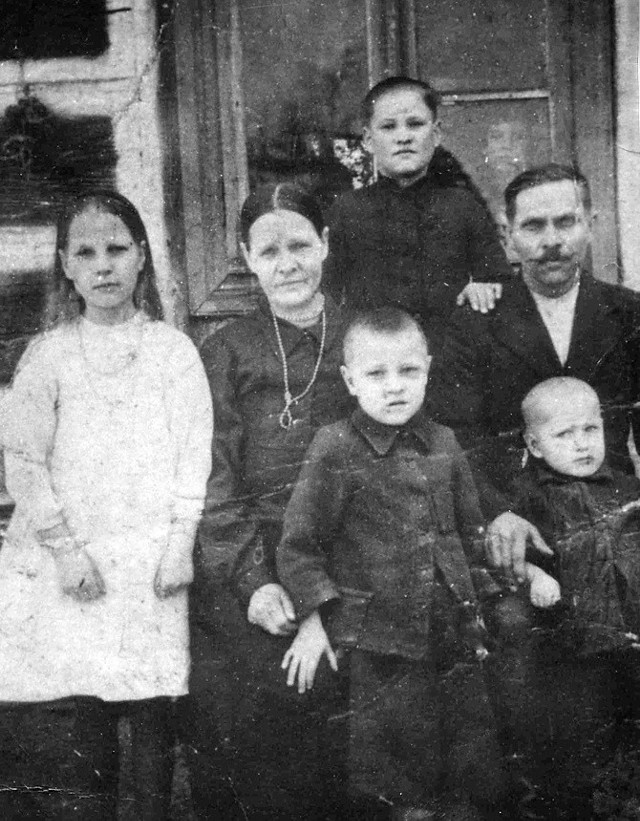 Scenes from the film   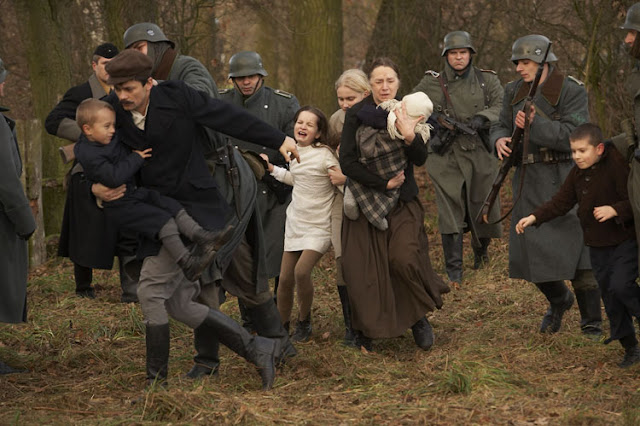  |
|
|
|
Post by pjotr on Feb 4, 2020 3:46:10 GMT 1
Some people, I guess, in the old Poland, will do anything for money, to feed there families. Mike Not only in Poland Mike, in the Netherlands of the Second world war too. Like you said earlier in some post somewhere else. The main reason for betrayal and collaboration was money. The first reason, some others were real idiots, they believed in Nazism, or were pathological anti-semites!
You are right. In my opinion the Netherlands even had a good name abroad as a country of resistance while the majority of the country was indifferent and there was a substantial group who was Nazi sympathiser or part of Dutch or German Nazi organisations. I think about Dutch Nazi mayors who actively cooperated with then Nazi German and Austrian occupational forces. I think about Dutch Gestapo and SD (Sicherheitsdienst) employee's, members of the Dutch National socialist party NSB (Nationaal Socialistische Beweging) (in 1944 101,314 Dutch people out of a total population of 9,174,000) and the paramilitary NSB militia, the WA (Weerafdeling) and the Landwacht organisations. I think about the Dutch state bureaucracy that collaborated with the German and Austrian Nazi's. Dutch civil servants that carried out German orders. I think about Dutch companies and multi-nationals that profited from the German war machine and trade with Nazi Germany. I think about the Amsterdam public transport (Amsterdam trams) and the Dutch Railways that actively cooperated with the German and Austrian and Dutch Nazi's by transporting Amsterdam jews from Amsterdam in the North-West to the Westerbork concentration camp in the middle of the eastern province of Drenthe. The majority of Dutch jews lived and still live in and around Amsterdam. From Westerbork Dutch jews were transported to the East to Auschwitz (65 train-loads totaling 60,330 people), Sobibor (19 train-loads; 34,313 people), Theresienstadt ghetto, and Bergen-belsen concentration camp (9 train-loads; 4,894 people). Almost all of the 94,643 persons deported to Auschwitz and Sobibor in German-Austrian Nazi-occupied Poland were killed upon arrival. Of the 154,000 Dutch jews that lived in the Netherlands in 1941 102,000 Dutch jews were murdered during the Holocaust. Next to the Dutch jews some 24,000 to 25,000 German-Jewish refugees were living in the Netherlands who had fled from Germany in the 1930s. (Other sources claim that some 34,000 Jewish refugees entered the Netherlands between 1933 and 1940, mostly from Germany and Austria).
In 1945, only about 35,000 Jews of the Netherlands were alive. The exact number of "full Jews" who survived the Holocaust is estimated to be 34,379 (of whom 8,500 were part of a mixed marriages, and thus spared deportation and possible death in the Nazi concentration camps). The number of "half Jews" who survived in the Netherlands at the end of the Second World War in 1945 is estimated to be 14,545; the number of "quarter Jews" was 5,990. Some 75% of the Dutch-Jewish population died in the Holocaust, an unusually high percentage compared with the other occupied countries in western Europe.
The WA was roughly an equivalent to the German SA (Sturmabteilung), was founded in 1932 by Dutch Nazi leader Anton Mussert, co-founder of the NSB in 1931 and its leader until the end of the war. Members wore and marched in black uniforms and were thus called "blackshirts". After the occupation the WA was put to use in much the same way as the SA was, forcing owners of restaurants and cafes to put up signs saying Jooden niet gewenscht ("Jews not welcome") and harassing and provoking inhabitants of neighbourhoods with many Jewish inhabitants.The WA men sing the song 'WA marches for people and fatherland.' WA man put's a sign 'Jews not welcome' in a Dutch pub in late 1940 WA man put's a sign 'Jews not welcome' in a Dutch pub in late 1940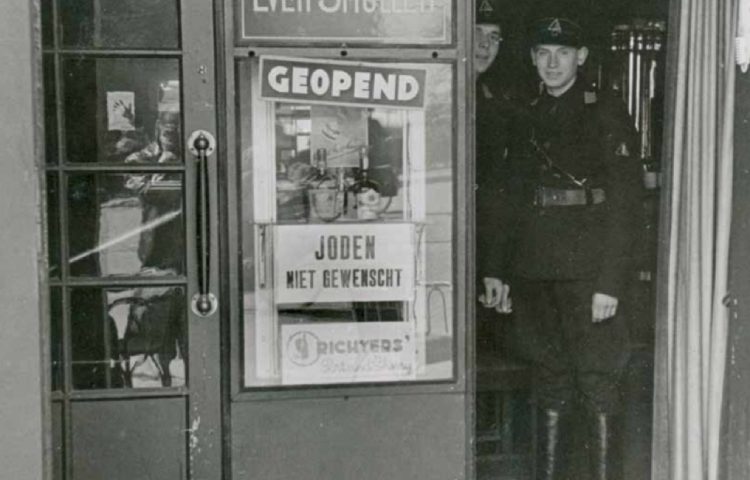 Smiling WA men after they put a 'Jews not welcome' in a Dutch pub in late 1940. Smiling WA men after they put a 'Jews not welcome' in a Dutch pub in late 1940. Dutch butcher with a sign 'No entry for jews' Dutch butcher with a sign 'No entry for jews'
I think about the Dutch Waffen SS which had 25 thousand Dutch volunteers in it's ranks which served in the following Dutch Waffen SS Divisions:
- SS Freiwilligen Legion Niederlande (1941): 2,559
- SS-Freiwilligen-Standarte Nordwest
- SS Volunteer Grenadier-Brigade Landstorm Nederland
- 4th SS Volunteer Panzergrenadier Brigade Nederland
- 23rd SS Volunteer Panzer Grenadier Division Nederland
- 34th SS Volunteer Grenadier Division Landstorm Nederland Dutch men of the 34th SS Volunteer Grenadier Division Landstorm Nederland, probably somewhere on the Eastern Front Dutch men of the 34th SS Volunteer Grenadier Division Landstorm Nederland, probably somewhere on the Eastern Front Dutch men of the 34th SS Volunteer Grenadier Division Landstorm Nederland on horses, probably somewhere on the Eastern FrontOperation Silbertanne Dutch men of the 34th SS Volunteer Grenadier Division Landstorm Nederland on horses, probably somewhere on the Eastern FrontOperation Silbertanne The objective of the Operation Silbertanne was revenge and disruption of the Dutch resistance. The murders were usually carried out by members of the Dutch SS. The objective of the Operation Silbertanne was revenge and disruption of the Dutch resistance. The murders were usually carried out by members of the Dutch SS.Operation Silbertanne (silver fir) was the codename of a series of murders that were committed between September 1943 and September 1944 during the German occupation of the Netherlands. The assassinations were carried out by a death squad composed of Dutch members of the SS and Dutch veterans of the Eastern Front. ( en.wikipedia.org/wiki/Operation_Silbertanne )  These sings with 'Prohibited for jews' could be found all over the Nazi occupied Netherlands. They were placed at the entrences of Parks, at the entrences of shops, theatres, muncipality buildings, libraries, cinema's and government buildings. These sings with 'Prohibited for jews' could be found all over the Nazi occupied Netherlands. They were placed at the entrences of Parks, at the entrences of shops, theatres, muncipality buildings, libraries, cinema's and government buildings.** Dutch collaboration/s3/static.nrc.nl/bvhw/files/2017/05/anp-1835016_duitse_bezetting.jpg) Dutch Nazi sympathisers of the NSB party welcome the German Nazi Wehrmacht in May 1940 when they occupied the Netherlands. These people were hated, feared and loathed by the majority of the Dutch population.Not all Dutch offered active or passive resistance against the German occupation. Some Dutch men and women chose or were forced to collaborate with the German regime or joined the German armed forces (which usually would mean being placed in the Waffen-SS). Others, like members of the Henneicke Column, were actively involved in capturing hiding Jews for a price and delivering them to the German occupiers. It is estimated that the Henneicke Column captured around 8,000-9,000 Dutch Jews who were ultimately sent to their death in the German death camps. Dutch Nazi sympathisers of the NSB party welcome the German Nazi Wehrmacht in May 1940 when they occupied the Netherlands. These people were hated, feared and loathed by the majority of the Dutch population.Not all Dutch offered active or passive resistance against the German occupation. Some Dutch men and women chose or were forced to collaborate with the German regime or joined the German armed forces (which usually would mean being placed in the Waffen-SS). Others, like members of the Henneicke Column, were actively involved in capturing hiding Jews for a price and delivering them to the German occupiers. It is estimated that the Henneicke Column captured around 8,000-9,000 Dutch Jews who were ultimately sent to their death in the German death camps.
The National Socialist Movement in the Netherlands (NSB) was the only legal political party in the Netherlands from 1941 and was actively involved in collaboration with the German occupiers. In 1941, when Germany still seemed certain to win the war, about three percent of the adult male population belonged to the NSB.
Recruitment poster for the Dutch SS
After World War II broke out, the NSB sympathized with the Germans, but nevertheless advocated strict neutrality for the Netherlands. In May 1940, after the German invasion, 10,000 NSB members and sympathizers were put in custody by the Dutch government. Soon after the Dutch defeat, on 14 May 1940, they were set free by German troops. In June 1940, NSB leader Anton Mussert held a speech in Lunteren in which he called for the Dutch to embrace the Germans and renounce the Dutch Monarchy, which had fled to London.
In 1940, the German regime had outlawed all socialist and communist parties; in 1941, it forbade all parties, except for the NSB. The NSB openly collaborated with the occupation forces. Its membership grew to about 100,000. The newcomers (meikevers) were shunned by many existing members, who accused them of opportunist behavior. The NSB played an important role in lower government and civil service; every new mayor appointed by the German occupation government was a member of the NSB. However, for most higher functions, the Germans preferred to leave the existing elite in place, knowing that the NSB neither offered enough suitable candidates nor enjoyed enough popular support. Henneicke Column Bernardus Andries "Dries" Riphagen (7 September 1909 – 13 May 1973) was a Dutch gangster and Nazi collaborator who is best known in the Netherlands for collaborating with the Nazi Germany's Sicherheitsdienst (SD) to locate as many Dutch Jews as possible and have them delivered to Nazi concentration camps during the Nazi occupation of the Netherlands. From 1943 he was part of the Henneicke Column, a group of investigators who searched out Jews who had gone underground. Bernardus Andries "Dries" Riphagen (7 September 1909 – 13 May 1973) was a Dutch gangster and Nazi collaborator who is best known in the Netherlands for collaborating with the Nazi Germany's Sicherheitsdienst (SD) to locate as many Dutch Jews as possible and have them delivered to Nazi concentration camps during the Nazi occupation of the Netherlands. From 1943 he was part of the Henneicke Column, a group of investigators who searched out Jews who had gone underground. The Henneicke Column was a group of Dutch Nazi collaborators working in the investigative division of the Central Bureau for Jewish Emigration ( Zentralstelle für jüdische Auswanderung), with headquarters in Amsterdam, during the Nazi Germany occupation of the Netherlands in World War II. Between March and October 1943 the group, led by former auto mechanic Wim Henneicke and Willem Briedé, was responsible for tracking down Jews in hiding and arresting them. The group arrested and "delivered" to the Nazi authorities 8,000-9,000 Jews. Most of them were deported to Westerbork concentration camp and later shipped to and murdered in Sobibor and other German extermination camps. The bounty paid to Henneicke Column members for each captured Jew was 7.50 guilders (equivalent to about US$47.50). The group, consisting of 18 core members, ended its work and was disbanded on October 1, 1943. However, the Column’s leaders continued working for Hausraterfassungsstelle ( Central Bureau for Jewish Emigration), tracking down hidden Jewish property. Before Nazi Germany retreated from the Netherlands in May 1945, Wim Henneicke was assassinated by the Dutch resistance in December 1944 in Amsterdam. Willem Briedé escaped the country and settled in Germany. In 1949 he was tried by a Dutch court in absentia and received the death penalty. The sentence was never carried out; Briedé died of natural causes in Germany in January 1962.  Special 'jew department' of the Dutch Police corps in Haarlem in the Dutch province of North-Holland near Amsterdam in the northwestern part of the Netherlands. Police Chief Abe Agema is sitting behind his desk. Special 'jew department' of the Dutch Police corps in Haarlem in the Dutch province of North-Holland near Amsterdam in the northwestern part of the Netherlands. Police Chief Abe Agema is sitting behind his desk. According to Holocaust historian Mordecai Paldiel’s “ Churches and the Holocaust: Unholy Teaching, Good Samaritans, and Reconciliation,” in his post-war trial Gestapo chief Willi Lages explained that without the cooperation of the Dutch police the Nazis wouldn’t have been able to track down even 10 percent of Dutch Jewry. Despite the Dutch-Nazi collaboration, including the Henneicke Column, which received a monetary bonus for every Jew they turned in, the Netherlands’ 5,516 Righteous Gentiles recognized by Yad Vashem is the second highest after Poland’s 6,620. The Dutch Railways during the Second World War Two original railway boxcars from the Westerbork transit camp at the memorial centre in Hooghalen, the Netherlands. Photograph: Siese Veenstra/EPADuring the Second World War the Dutch Railways (Nederlandse Spoorwegen, NS) remained an independent company, but was forced to do the Germans' bidding; the Dutch Railways was forced to construct the railway lines to camp Westerbork and help in the deportation of almost a hundred thousand Jews to extermination camps. The NS went on a strike once during the war, in the winter of 1944-45, after it had declined to participate in one a year earlier. Two original railway boxcars from the Westerbork transit camp at the memorial centre in Hooghalen, the Netherlands. Photograph: Siese Veenstra/EPADuring the Second World War the Dutch Railways (Nederlandse Spoorwegen, NS) remained an independent company, but was forced to do the Germans' bidding; the Dutch Railways was forced to construct the railway lines to camp Westerbork and help in the deportation of almost a hundred thousand Jews to extermination camps. The NS went on a strike once during the war, in the winter of 1944-45, after it had declined to participate in one a year earlier.
*The Dutch railway has accepted a recommendation that it pay up to €50m (£45m) to relatives of thousands of people it transported to Nazi death camps during the second world war.  A goods wagon of the Dutch Railways used by the Nazis during the Second World War is lowered to the ground at the Memorial Centre in Westerbork, in the Netherlands (Photo: Getty Images) Dutch resistanceThe Dutch resistance to the Nazi occupation of the Netherlands during World War II can be mainly characterized as non-violent. The primary organizers were the Communist Party, churches, and independent groups.[1] Over 300,000 people were hidden from German authorities in the autumn of 1944 by 60,000 to 200,000 illegal landlords and caretakers. These activities were tolerated knowingly by some one million people, including a few incidental individuals among German occupiers and military. A goods wagon of the Dutch Railways used by the Nazis during the Second World War is lowered to the ground at the Memorial Centre in Westerbork, in the Netherlands (Photo: Getty Images) Dutch resistanceThe Dutch resistance to the Nazi occupation of the Netherlands during World War II can be mainly characterized as non-violent. The primary organizers were the Communist Party, churches, and independent groups.[1] Over 300,000 people were hidden from German authorities in the autumn of 1944 by 60,000 to 200,000 illegal landlords and caretakers. These activities were tolerated knowingly by some one million people, including a few incidental individuals among German occupiers and military.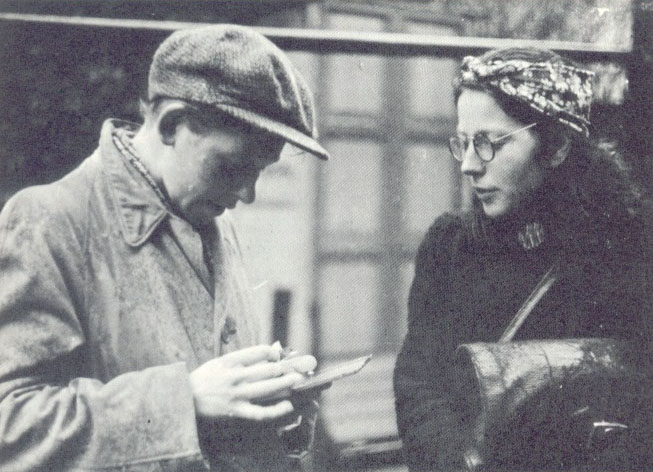 2 women of the Dutch communist resistance, Truus Menger and Hannie Schaft. 2 women of the Dutch communist resistance, Truus Menger and Hannie Schaft. ( en.wikipedia.org/wiki/Hannie_Schaft pl.wikipedia.org/wiki/Hannie_Schaft )
The Dutch resistance developed relatively slowly, but the February strike of 1941 (which involved random police harassment and the deportation of over 400 Jews) greatly stimulated resistance. The first to organize themselves were the Dutch communists, who set up a cell-system immediately. Some other very amateurish groups also emerged, notably, De Geuzen, set up by Bernardus IJzerdraat, as well as some military-styled groups, such as the Order Service (Dutch: Ordedienst). Most had great trouble surviving betrayal in the first two years of the war. Resistance group operating near Dalfsen, Ommen and Lemelerveld at the heart of the province of Overijssel in the eastern Netherlands.Dutch counterintelligence, domestic sabotage, and communications networks eventually provided key support to Allied forces, beginning in 1944 and continuing until the Netherlands was fully liberated. Of the Jewish population 105,000 out of 140,000 perished in the Holocaust, most of whom were murdered in Nazi death camps.[3] A number of resistance groups specialized in saving Jewish children. The Columbia Guide to the Holocaust estimates that 215–500 Dutch Romanis were killed by the Nazis, with the higher figure estimated as almost the entire pre-war population of Dutch Romanis. Resistance group operating near Dalfsen, Ommen and Lemelerveld at the heart of the province of Overijssel in the eastern Netherlands.Dutch counterintelligence, domestic sabotage, and communications networks eventually provided key support to Allied forces, beginning in 1944 and continuing until the Netherlands was fully liberated. Of the Jewish population 105,000 out of 140,000 perished in the Holocaust, most of whom were murdered in Nazi death camps.[3] A number of resistance groups specialized in saving Jewish children. The Columbia Guide to the Holocaust estimates that 215–500 Dutch Romanis were killed by the Nazis, with the higher figure estimated as almost the entire pre-war population of Dutch Romanis.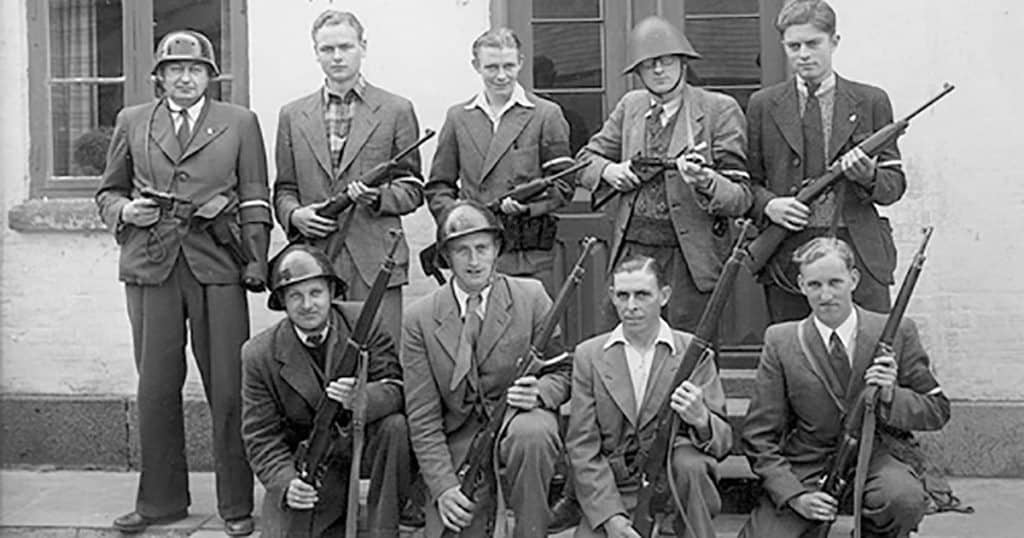 A Dutch Resistance cell during WWII. For God and CountryAssassination of a Dutch Nazi collaborator by the Dutch resistanceSources: Wikipedia, NRC Handelsblad, Trouw, the Guardian and History Collection A Dutch Resistance cell during WWII. For God and CountryAssassination of a Dutch Nazi collaborator by the Dutch resistanceSources: Wikipedia, NRC Handelsblad, Trouw, the Guardian and History Collection*https://www.theguardian.com/world/2019/jun/27/dutch-railway-to-pay-out-50m-over-role-in-holocaust **https://en.wikipedia.org/wiki/Netherlands_in_World_War_II#Collaboration |
|
|
|
Post by pjotr on Feb 4, 2020 4:43:38 GMT 1
The Girl with the Red Hair..1981. The whole movie. Please if you want to watch press on English subtitles in the youtube video.The Girl with the Red Hair (Dutch: Het meisje met het rode haar) is a 1981 Dutch drama film directed by Ben Verbong. It is based on the biography of resistance fighter Hannie Schaft.
It was entered into the 32nd Berlin International Film Festival.
Hannie Schaft
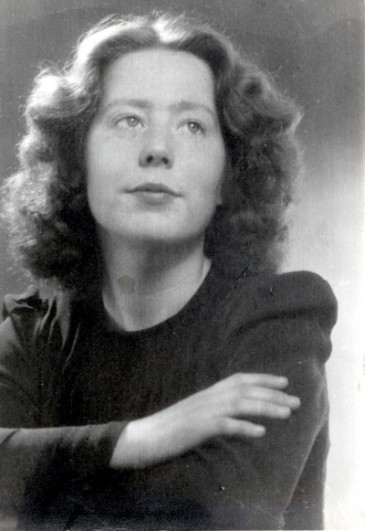
Hannie Schaft
Jannetje Johanna (Jo) Schaft (16 September 1920 – 17 April 1945) was a Dutch communist resistance fighter during World War II. She became known as 'the girl with the red hair' (Dutch: Het meisje met het rode haar). Her secret name in the resistance movement was "Hannie".
Schaft was murdered by Dutch Nazi officials on 17 April 1945. Although at the end of the war there was an agreement between the occupier and the Binnenlandse Strijdkrachten ('Dutch resistance') to stop executions, she was shot dead three weeks before the end of the war in the dunes of Bloemendaal. Two men took her there and one shot her at close range, only wounding her. She is said to have told her executioners: Ik schiet beter "I shoot better!", after which the other man delivered the final shot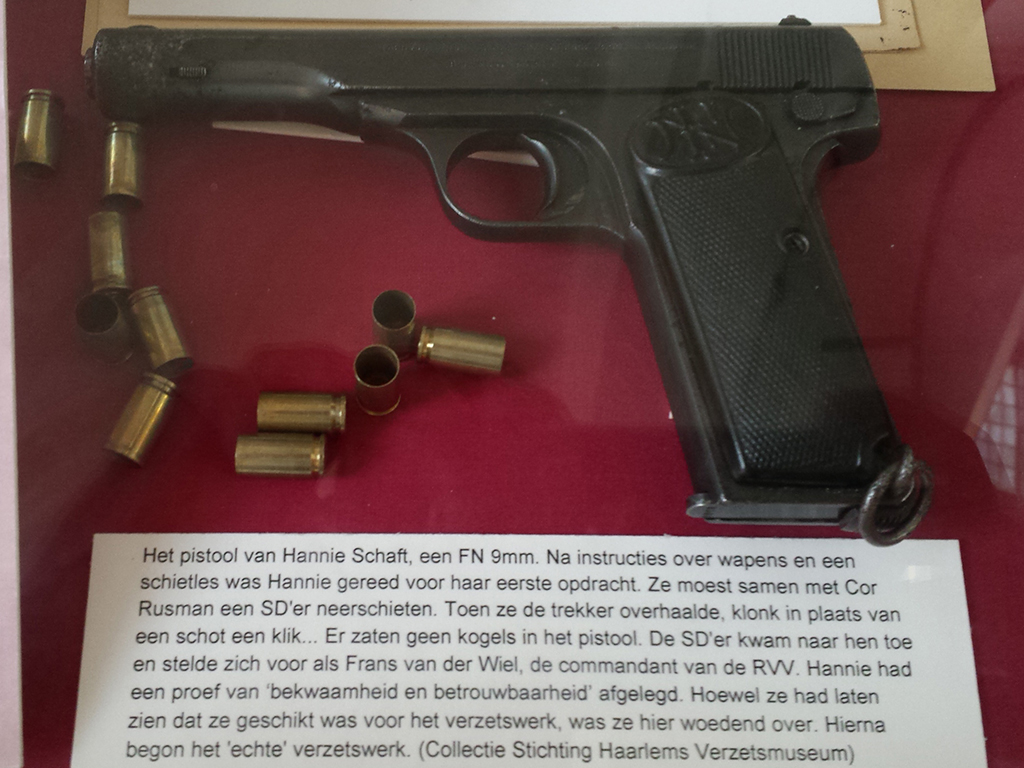 The pistol of resistance fighter Hannie Schaft, the girl with the red hair. The pistol of resistance fighter Hannie Schaft, the girl with the red hair.
|
|
|
|
Post by pjotr on Feb 4, 2020 5:14:33 GMT 1
Dutch Nazi collaborators harass Amsterdam jews and Dutch opponents
You see the struggle between Social Democratic workers and Dutch Nazi's in a Jewish neighbourhood in Amsterdam. (Comparable between pre-war clashes between the Bund/PPS on one side and the Endecja on the other side in Pre-War Warsaw) The German Jewish owner of an Ice store meets an old friend from Berlin who is a Wehrmacht officer in the Netherlands, but not a nazi. The brother of their mutual girlfriend is a Dutch Socialist Anti-fascist who hangs around the ice store with a group of Anti-fascist socialist (Social-Democratic) workers to defend the Store against the attacks of the Dutch Blackshirts of the Nazi militia WA.. In the same street young Nazi men hang around who will become part of that notorious, feared and loathed Dutch WA men in black uniforms harassing the jewish owner and customers of the ice store. For a short while his pre-war friend who is a Wehrmacht officer can prevent the Nazi's from harassing and destroying the store of his old friend from Berlin. But during the movie his power diminsishes and the pressure of the Dutch and German/Austrian Nazi's grows. A dark cloud hangs over the ice store of the German jew who escaped in the thirties to the Netherlands. But bad luck followed him and the Nazi's invaded the Netherlands and he couldn't escape. He is a civilized, sophisticated and gentle man and hopes that the Germans will stay reasonable. But the times are changing and things will change soon. The movie shows the complicated relations and sometimes contradictio in terminis situations in the war. It was just before the Holocaust started in 1941, but in the movie you already feel the tension. The movie has something melancholic and sad due to the dramatic music of Gustav Mahler and the knowledge of a grim future for the German Jewish owner in that Jewish Amsterdam neighbourhood. The Dutch Nazi's in their black WA uniforms and the German Wehrmacht and Gestapo are coming closer and closer.
|
|